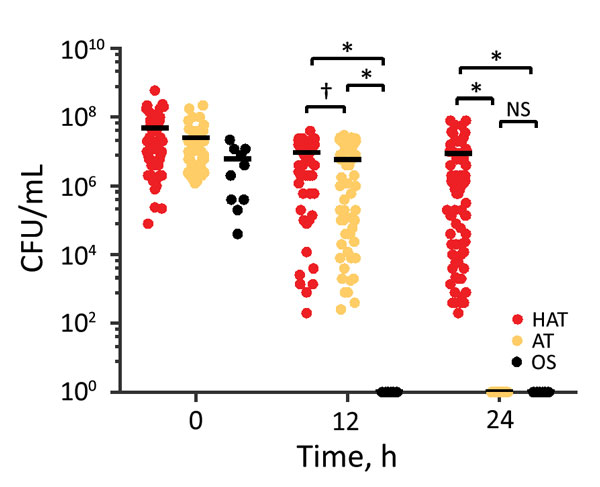Volume 24, Number 6—June 2018
Research
Frequent Implication of Multistress-Tolerant Campylobacter jejuni in Human Infections
Figure 1

Figure 1. Campylobacter jejuni strains with increased aerotolerance in human clinical cases of campylobacteriosis. Results show levels of aerotolerance in 121 C. jejuni strains, including HAT (n = 65), AT (n = 46), and OS strains (n = 10). Clinical strains of C. jejuni were mostly AT and HAT. Results are representative of 3 independent experiments, and similar results were observed in all repeated experiments. Solid horizontal lines indicate average CFU. AT, aerotolerant; HAT, hyperaerotolerant; NS, not significant; OS, oxygen sensitive. *p<0.0001; †p<0.001.
Page created: May 17, 2018
Page updated: May 17, 2018
Page reviewed: May 17, 2018
The conclusions, findings, and opinions expressed by authors contributing to this journal do not necessarily reflect the official position of the U.S. Department of Health and Human Services, the Public Health Service, the Centers for Disease Control and Prevention, or the authors' affiliated institutions. Use of trade names is for identification only and does not imply endorsement by any of the groups named above.